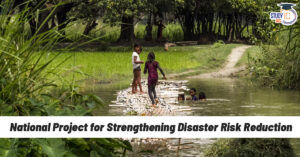Table of Contents
India secures the 10th position in the Climate Change Performance Index (CCPI) 2025, maintaining its place among the world’s better climate performers. However, the top three spots remain vacant, as no country met the highest benchmarks set across all climate action indicators.
Published by Germanwatch, NewClimate Institute, and the Climate Action Network, the CCPI 2025 evaluates the climate efforts of 63 countries and the European Union, which together account for over 90% of global greenhouse gas emissions.
What is the Climate Change Performance Index?
The CCPI serves as an independent monitoring tool for climate protection performance. It assesses countries based on four major categories:
-
Greenhouse Gas (GHG) Emissions
-
Renewable Energy
-
Energy Use
-
Climate Policy
Each indicator is scored and combined to produce an overall performance ranking. This year’s report revealed a sobering truth: no country is on track to meet the Paris Agreement goals of limiting global warming to well below 2°C, ideally 1.5°C.
India’s Performance in CCPI 2025
India has secured the 10th position in the Climate Change Performance Index 2025, making it one of the top 10 countries in terms of climate action. Although India has dropped two positions compared to CCPI 2024, it continues to be recognized globally for its climate initiatives.
India’s Category-wise Performance:
-
GHG Emissions: High rating due to low per capita emissions.
-
Energy Use: High rating thanks to energy efficiency improvements.
-
Climate Policy: Medium rating due to delays in policy execution.
-
Renewable Energy: Low rating despite ambitious solar targets.
India’s performance is influenced by its expansion in solar power, electric mobility efforts, and leadership in the International Solar Alliance. However, its continued reliance on coal and limited enforcement of environmental policies are key drawbacks.
Top 10 Countries in Climate Change Performance Index 2025
The top three ranks are unassigned, as no nation achieved a “very high” rating across all categories. Here’s the official top 10 list:
| Rank | Country | Score |
|---|---|---|
| — | — | — |
| — | — | — |
| — | — | — |
| 4 | Denmark | 78.37 |
| 5 | Netherlands | 69.60 |
| 6 | United Kingdom | 69.29 |
| 7 | Philippines | 68.41 |
| 8 | Morocco | 68.32 |
| 9 | Norway | 68.21 |
| 10 | India | 67.99 |
Denmark holds the highest rank at #4 due to its:
-
Exceptional use of renewable energy
-
Strong climate policies
-
Efficient GHG emissions control
Bottom 10 Countries in Climate Change Performance Index 2025
Many of the lowest-ranking countries are major fossil fuel producers or have regressive climate policies.
| Rank | Country | Score |
|---|---|---|
| 58 | Japan | 39.23 |
| 59 | Argentina | 35.96 |
| 60 | Chinese Taipei | 34.87 |
| 61 | Kazakhstan | 33.43 |
| 62 | Canada | 28.37 |
| 63 | South Korea | 26.42 |
| 64 | Russia | 23.54 |
| 65 | United Arab Emirates | 19.54 |
| 66 | Saudi Arabia | 18.15 |
| 67 | Iran | 17.47 |
-
High carbon footprints
-
Weak renewable energy policies
-
Little to no improvement in climate legislation
G20 Performance: Where Do Major Economies Stand?
Among G20 countries, only a few — like India and the United Kingdom — show relatively strong climate performance. Others, like the United States, China, and Canada, score poorly.
| G20 Country | CCPI Rank | Performance Notes |
|---|---|---|
| India | 10 | Low per capita emissions, renewable push |
| United Kingdom | 6 | High in GHG & energy use, low in renewables |
| China | 55 | High emissions, improving renewable efforts |
| United States | 57 | High fossil fuel dependency, weak policies |
| Canada | 62 | High emissions, poor climate leadership |
| Saudi Arabia | 66 | Very high fossil fuel dependency |
CCPI 2025: Key Trends & Analysis
-
Vacant Top Spots (Ranks 1–3)
-
No country met the threshold for a “very high” overall rating across all four categories.
-
Illustrates that even progressive nations lack a full spectrum of strong climate indicators.
-
-
Renewable Energy as a Bottleneck
-
Most top performers still have room for improvement in renewable energy share.
-
Conversely, many bottom-ranked countries show limited or negligible renewable capacity growth despite abundant solar/wind potential.
-
-
Policy Implementation Gaps
-
Even when robust policies exist on paper, enforcement delays, bureaucratic hurdles, and financial constraints impede real-world results.
-
Countries with conflicting economic priorities (e.g., subsidized fossil fuels) struggle to achieve mid- to high-level ratings in Climate Policy.
-
-
Emissions Per Capita vs. Total Emissions
-
Low per capita emissions (e.g., India) can coexist with high absolute emissions, affecting global progress.
-
High-income nations often record high per capita energy use, penalizing their rank despite advanced technologies.
-
Future Outlook: How Can India and the World Improve?
For India:
-
Accelerate Coal Phase-Out
-
Mandate a strict timeline for retiring inefficient coal plants by 2030.
-
Redirect subsidies from coal to renewables, storage, and grid modernization.
-
-
Strengthen Climate Policy Enforcement
-
Enforce stricter emission standards for industries.
-
Introduce carbon pricing mechanisms (e.g., a national carbon market or tax).
-
-
Scale Up Green Technologies
-
Expand incentives for rooftop solar and small-scale wind projects in rural and peri-urban areas.
-
Promote electric public transport and two-wheelers with favorable financing schemes.
-
-
Enhance International Cooperation
-
Leverage leadership in the International Solar Alliance to catalyze technology transfer and financing.
-
Collaborate with G20 partners to share best practices in energy efficiency and climate finance.
-
For the Global Community:
-
Fill the “Empty” Top Three Slots
-
Countries must aim for “very high” ratings in all CCPI categories—accelerating the 1.5 °C pathway.
-
Prioritize holistic action plans that marry renewable expansion with ambitious emission cuts.
-
-
Replace Fossil Fuel Subsidies with Green Incentives
-
Reallocate global subsidies from oil, gas, and coal to clean energy research, infrastructure, and equitable energy access.
-
-
Strengthen Climate Finance
-
Increase funding for developing nations’ mitigation and adaptation measures via multilateral channels (e.g., Green Climate Fund).
-
Ensure measurable, transparent outcomes for financed projects.
-
-
Leverage Technology & Innovation
-
Scale up carbon capture, usage, and storage (CCUS) projects in both developed and developing contexts.
-
Invest in grid-scale storage, smart grids, and demand-response systems to optimize renewable integration.
-
Conclusion
The Climate Change Performance Index 2025 sends a clear message: no country is yet fulfilling its full potential in battling climate change. Even the top performers (Denmark, Netherlands, UK, etc.) exhibit medium or low ratings in at least one critical category. This underscores a global gap between political pledges and tangible results.
India’s 10th-place ranking demonstrates commendable progress—especially in managing per-capita emissions and improving energy efficiency. However, India must tackle its continued coal dependency and policy enforcement challenges to strengthen its position further. By accelerating renewable energy adoption, phasing out coal, and deepening international cooperation, India can transition from a “top-10” performer to one of the world’s leading climate champions.
As pressures mount to keep global warming below 1.5 °C, the CCPI 2025 emphasizes that every nation must do more. Only through unified, decisive action—across policy enforcement, technological innovation, and emissions reduction—can the world hope to safeguard a sustainable future for generations to come.


 National Project for Strengthening Disas...
National Project for Strengthening Disas...
 CAG Report on Pradhan Mantri Kaushal Vik...
CAG Report on Pradhan Mantri Kaushal Vik...
 NITI Aayog Report on Public R&D Inst...
NITI Aayog Report on Public R&D Inst...

























